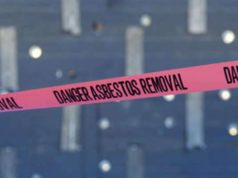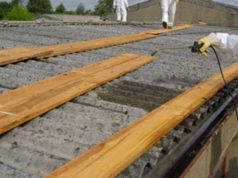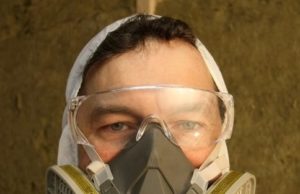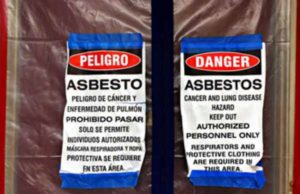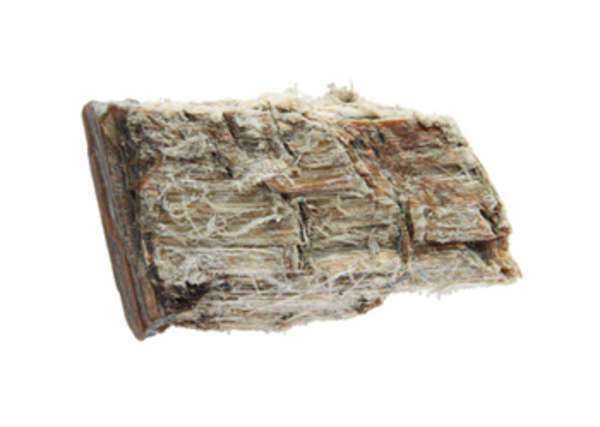
How do I manage an asbestos problem?
Your plan of action for an asbestos problem depends on the severity of the asbestos expose. Home that have exposed friable asbestos almost certainly have a major asbestos problem and this will result in an asbestos emergency. All other applications of asbestos that are not exposed can be subject to asbestos abatement. Some applications of asbestos require no asbestos abatement at all. This is not an asbestos problem as these non-friable materials do not pose a risk to the health of those exposed to it.
Friable asbestos vs. non-friable
You will find that managing an asbestos problem depends on the nature of the asbestos in question. Friable asbestos is found in insulation, wall coverings, sprayed ceilings and exposed pipes. The danger from these applications involves the composition of the asbestos fibers. For one, friable asbestos breaks part easily. Friable asbestos appears to be made up of thick fibers, but in reality, each of these fibers is made up of tiny fibers that are impossible to see. Not only do these fibers become easily airborne, they are also easily inhaled. Asbestos fibers do not break down in the body and will remain there to cause progressive damage to the lungs.
You will only have an asbestos problem with the presence of friable asbestos. This is due to the fact that non-friable asbestos, typically found in roofing and concrete siding are inert in that form. As long as the asbestos has a protective barrier, there is no danger of fibers being released. This includes vinyl flooring, as the protective polymer mostly eliminates asbestos escaping during the course of typical use.
Asbestos problems during renovation
When you undergo renovation, you will have to consider the possibility of breaching non-friable asbestos materials, thus rendering dangerous. This asbestos problem is resolved by abating the non-friable asbestos. Although you will not have to remove the asbestos under normal circumstances, cutting, drilling, crumbling or even sanding a material that contains more than 1% asbestos by weight, can compromise the integrity of the material, thus leading to the exposure of asbestos materials. Most asbestos containing materials are removed only before a demolition, reflecting the relative lack of danger posed by non-friable asbestos. Non-friable asbestos are divided into two categories and the latter one covers non-friable asbestos that may potential crumble and release asbestos fibers.
Dangers of poor abatement
You may choose abatement to deal with your asbestos problem but you will have to be aware of the potential dangers. Poor abatement generally involves failing to follow procedure, especially removing the asbestos while it is dry. Wetting is important as the waterlogged fibers do not become airborne and make the subsequent cleanup significantly easier. You must also use HEPA filters and vacuums to attract the micro asbestos fibers. Plastic sheeting is used to create an enclosure that when used with the filters will cycle the air through the area four times in an hour, collecting the particles in the process.
Protective clothing and good hygiene must be performed to protect workers from sickening themselves. Federal guidelines mandate a specialized decontamination shower to prevent asbestos fibers from escaping on clothing and equipment worn at the asbestos abatement location. This will not be feasible in your home but should give you an idea that you should be ready to dispose of the tools, clothing and protective material used in the abatement. Some states will mandate that this equipment be disposed of sealed in the same banner as the friable asbestos.
Is removal the solution for my asbestos problem?
You are not required to remove asbestos from your home unless it is exposed and friable. Federal law generally allows you to remove your own asbestos, but you must adhere to laws regard proper disposal. Self-removal of asbestos containing materials will potentially cause more harm than necessary as since breaching indurate material will cause the mass release of harmful fibers. Asbestos abatement procedure minimizes this risk by mandating adequate protection, filters to trap loose particles and techniques such as wetting friable asbestos to prevent fibers from becoming airborne. If you choose removal of the asbestos materials, trust a contractor licensed by the state to perform asbestos abatement. All structures that are not residential homes or apartment buildings with less than four units will be mandated by law to use a contractor and notify the state of plans for asbestos abatement.
What are cheaper solutions to my asbestos problem?
As an alternative to abatement through removal of all asbestos materials, you can seal asbestos fibers to prevent their escape. This solution lets you keep all materials intact and you will not need to replace any materials containing asbestos. This is called encapsulation and can be performed by a licensed asbestos contractor. Encapsulation is a viable alternative for surfaces such as plaster ceilings that inevitably break down and leach fibers. As long as the bond remains intact, no fibers will pass through the encapsulation. Surfaces, such as round pipes, that otherwise cannot have the bond applied can undergo enclosure. Enclosure surrounds the friable material with an indurate material, typically concrete, effectively sealing it and preventing the fibers from escaping. Like the encapsulation, as long as the barrier remains intact, there is no danger to you or your family.
When using encapsulation, you eliminate a number of issues that arise from typical asbestos abatement, particularly abatement performed without a contractor. There are often state, federal and local laws that affect where and how you may dispose of asbestos. Generally, this involves sealing and double bagging, but there are additional regulations that determine how you must label the container and if there are special regulations for the vehicle transporting the waste. You may need to make prior arrangements with the disposal site.
Importance of licensing
You must use a licensed contractor only. The license must specifically cover asbestos abatement. All states are mandated to have criteria for contractors performing asbestos abatement. This will include safety training and proven knowledge of performing asbestos abatement procedure.



